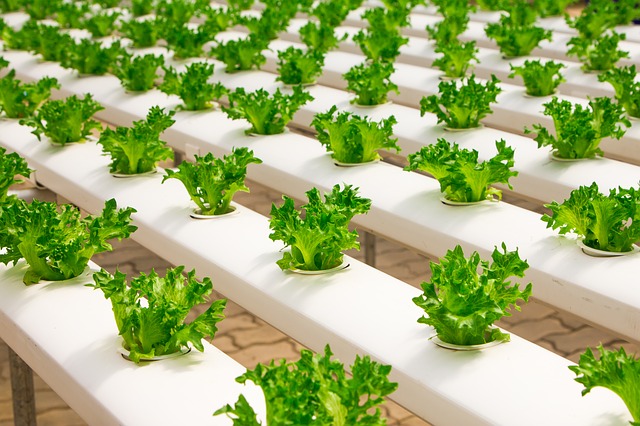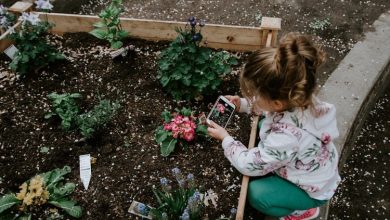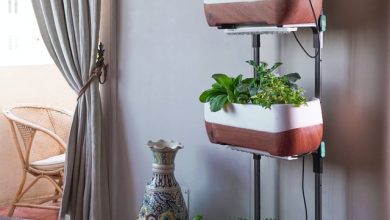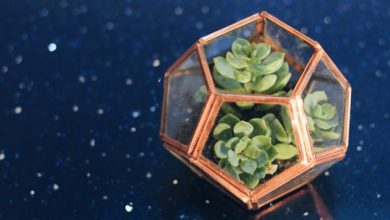What Is Hydroponic Gardening?

Hydroponic gardening is a term many of us have heard before, but how familiar are you with this unique approach to growing your favorite plants? As it turns out, hydroponic gardening is not just a unique approach to sustaining plant growth; it’s also a very effective way to grow a large variety of plants and flowers.
In this article, we will discuss what hydroponic gardening is, the different versions of this gardening system that you can use, and how you can do hydroponic gardening of your own.
What Is Hydroponic Gardening?
If you are looking for a better way to control what goes on in your garden, hydroponics is an excellent choice. During hydroponic gardening, the gardener controls the light, nutrients, water, temperature, and more.
One of the first things you will notice about hydroponic gardening is the lack of dirt used in the process. While soil is the traditional method for planting, hydroponic gardening is reliant on water. When you break the hydroponics word down to its Greek roots, “hydro” translates to water, and “ponos” translates to labor.
Just as plants get nutrients from the soil where they are growing, plants in hydroponic environments obtain the required nutrients directly through the supplied water. A growing media such as sand or perlite is still used to house plants growing hydroponically and to facilitate the water nutrients getting to the plant.

What Are the Benefits of Hydroponic Gardening?
Hydroponic gardening methods have been used for thousands of years. The history of hydroponic use in gardening ranges from the ancient Babylonians to 13th century China before finally landing in the present. But what makes some gardeners choose the hydroponic method over soil growing methods? Here is a look at some benefits of hydroponic gardening:
- Location – One of the best things about growing plants hydroponically is the ability to grow anywhere that you want. If you lack outdoor space or need a more convenient location for plant growing, hydroponics can be established anywhere. Apartment dwellers often appreciate hydroponics for the capability it allows for gardening indoors.
- Water Conservation – Surprisingly, water-based gardening can actually conserve resources better than traditional methods. According to the National Park Service, hydroponic plants can use up to ten times less water than field-grown plants.
- Better Control – Overall, growing hydroponically gives you a lot more control over how things are done in your garden. Hydroponic gardening allows you to control water pH levels, which nutrients your plants have access to, how much light is given to your plants, the climate in which your plants are grown, and (of course) how much water your plants have access to.
- Chemical Reduction – When plants aren’t grown outdoors in soil, there is less of a need for pest and weed control through the use of herbicides and insecticides. For those who prefer to garden more naturally and organically, hydroponics can be an excellent option.
- Enhanced Growth – Because you can better control growing conditions in hydroponic gardening, you are able to ensure better environmental conditions are provided for your plants, thus allowing for often faster growth than soil gardening.
- Efficiency – If you’ve ever scoffed at the amount of work that goes into outdoor gardening, hydroponics could be a better option for you. Hydroponic gardening does take a lot of work. However, through growing hydroponically, you will be able to skip much of the weeding, tilling, fumigating, and watering that often go hand-in-hand with gardening. Hydroponic gardening can be a real time-saving option.
- Healthier Plants – Hydroponically-grown plants are not faced with as many problems in the areas of pests and diseases as other plants, which allows the plants to grow and thrive in a more steadily healthy environment.

The Different Types of Hydroponic Gardening
While hydroponic gardening is water-focused overall, there are different approaches to this method that utilize varying techniques. Below is a list of six different hydroponic gardening systems that are commonly used:
- Wick System – The wick system for hydroponics is one of the most popular options due to its simplicity. This system is comprised of a large portion of water, a wick or rope for water and nutrient delivery, and media to hold the plants in place and facilitate the delivery of water and nutrients.
- Water Culture System – Water culture systems are comprised of a pretty basic structure that includes plants floating in a water and nutrient system. Plants receive oxygen through a pump that puts bubbles into the water.
- Ebb and Flow System – With the ebb and flow system of hydroponics, plants are placed into a tray that holds a water reservoir beneath it. Throughout the day, the plant tray is flooded with nutrient-enriched water.
- Aeroponic System – Plants are suspended with their roots above a water misting system in the aeroponic form of hydroponic gardening.
- Nutrient Film Technique System – The nutrient film technique system of hydroponic gardening encompasses a slightly more complicated setup; however, many hydroponic gardeners swear by it. Through this hydroponic system, plants are placed in a channel that has a continually circulating water source flowing over their root systems.
- Drip System – You most likely will not see a drip hydroponic system used in personal gardens. Drip systems are often used in commercial growing environments but require a more complicated setup that involves timers and personal drip lines for each plant.

What Plants Can You Grow Hydroponically?
Technically, you can grow almost any plant hydroponically. That being said, there are several plants that grow exceedingly well in hydroponic environments. Below is a list of plants that are commonly grown in hydroponic gardens:
- Lettuce
- Kale
- Cabbage
- Spinach
- Chard
- Carrots
- Beets
- Potatoes
- Garlic
- Onions
- Blueberries
- Strawberries
- Herbs of various varieties
- Peace lilies
- Snapdragons
- Dahlias
- Carnations
How to Start Your Own Hydroponic Garden
Hydroponic gardens may take a little more effort in the beginning than traditional soil gardens, but they can be worth it in the end. If you’re ready to start your own hydroponic garden, here is a great way to get started.
- Your first step is to choose and construct the hydroponic gardening method that will work best for you. One of the six hydroponic methods listed above will generally work for most gardeners.
- As mentioned in various hydroponic gardening methods, the use of a medium is necessary to house your plants. Perlite, gravel, clay pellets, or sand can make for excellent medium options. Some gardeners also opt to use a combination of growing mediums.
- Before you plant seeds, you should choose and implement your lighting system. Your plants will rely on you to provide a reliable light source. LED lighting is a commonly chosen lighting option by hydroponic gardeners.
- Planting the seeds in your medium is the next step. It’s recommended that you use a seed starter mat to encourage plant and root growth.
- Next, the water in your hydroponic system needs to have nutrients added. You can use a store-bought liquid nutrient solution or make one of your own.
- The pH balance in your water is essential. Using a pH meter, check the levels in your garden to see if they need to be adjusted. There are natural ways to adjust pH levels, but you can also purchase pH adjustment solutions in-store.
- Because your plants are being grown indoors, you’ll need to encourage pollination yourself. You can pollinate by lightly shaking plants with your finger as needed.
- Watch your plants grow and enjoy! Simply make sure that all conditions mentioned above are met on a continuous basis, and your hydroponic garden should grow and thrive.

Expert Hydroponic Gardening Tips
If you’re looking to enhance your hydroponic gardening success, check out these expert gardening tips below.
- After you have decided which plants to grow in your hydroponic system, research what their individual nutrient requirements are and then build your nutrient solution around those needs. You may find that you need separate hydroponic systems to encourage proper growth for different plants.
- The temperature of your garden’s water source matters. Try to keep your water temperature between 65 and 80 degrees Fahrenheit.
- Safety is crucial while growing hydroponically. Be sure to utilize caution when using electricity anywhere near water sources. It’s recommended that light ballasts, outlets, and any power sources are kept very far from your hydroponic systems or in a separate room if possible. Any extension cords used should be regularly checked to ensure proper function, and your hydroponic system should be checked often for leaks or cracks.
- Check nutrient and pH levels in your water source daily. By being proactive in this area, you can quickly address problems or needs and promote your plant’s optimal growth at all times.
- The quality of air supplied to your garden can impact growth results. If your hydroponic gardening area is built outdoors, it can help tremendously if you add air filters onto your air intake or exhaust systems.
- A thorough cleaning of your hydroponic system should always be conducted between the planting of new crops.
- Because you are in control of your plant’s light sources, using a timer to control light and dark periods can help keep your garden on a natural and healthy track each day.
- Avoid using plant food for any reason. Supplementing nutrients via plant food in your hydroponic system’s water source can throw off accurate pH and nutrient levels and clog your system.



